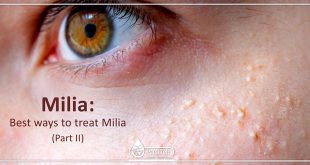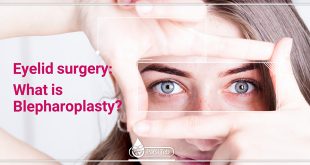Night blindness (nyctalopia) is a type of vision impairment. People with night blindness experience poor vision at night or in dimly lit environments. Although the term “night blindness” implies that you cannot see at night, this is not the case. You may just have more difficulty seeing and/or driving in darkness.
Some types of night blindness are treatable, and others are not. Consult your doctor to determine the underlying cause of your vision impairment. Once you know the cause of the problem, you can take steps to correct your vision.
Causes of Night Blindness
A number of eye conditions can cause night blindness, including:
- nearsightedness: blurred vision when looking at faraway objects
- cataracts: a clouding of the eye’s lens
- retinitis pigmentosa: when dark pigment collects in your retina, creating tunnel vision
- Usher syndrome: a genetic condition that affects both hearing and vision
Older adults have a greater risk of developing cataracts. Seniors are therefore more likely to suffer from night blindness than children or young adults.
In rare cases, vitamin A deficiency can also lead to night blindness. Vitamin A, also called retinol, plays a role in transforming nerve impulses into images in the retina. The retina is a light-sensitive area in the back of your eye.
Patients who have diseases of the liver or pancreas sometimes cannot absorb large amounts of vitamin A. So, they are at greater risk for developing night blindness, according to Boston’s Beth Israel Deaconess Medical Center (BIDMC).
Patients who have high blood glucose (sugar) levels or diabetes also have a higher risk of developing eye diseases, such as cataracts.
Symptoms of Night Blindness
The sole symptom of night blindness is difficulty seeing in the dark. You are more likely to suffer from night blindness when transitioning from a bright environment to an area of low light. You are likely to experience poor vision when driving, due to the intermittent brightness of headlights and streetlights on the road.
Treating Night Blindness
Your eye doctor will take a detailed medical history and examine your eyes in order to diagnose night blindness. You may also be asked to give a blood sample. Blood testing can measure your vitamin A and glucose levels.
Night blindness caused by nearsightedness, cataracts, or vitamin A deficiency is treatable. Corrective lenses, such as eyeglasses or contacts, can improve nearsighted vision both during the day and at night. Let your doctor know if you still have trouble seeing in dim light even with corrective lenses.
Treating Catracts
Clouded portions of your eye’s lens are called cataracts. Cataracts can be removed through surgery. Your surgeon will replace your cloudy lens with a clear, artificial lens. Your night blindness will improve significantly after surgery if cataracts are the underlying cause.
Treating Vitamin A Deficiency
If your vitamin A levels are low, your doctor might recommend vitamin supplements. Take the supplements exactly as directed. Most people in the developed world do not suffer from vitamin A deficiency because they have access to proper nutrition.
Treating Night Blindness Causes by a Genetic Defect
Genetic conditions that cause night blindness, such as retinitis pigmentosa, are not treatable. The genetic defect that causes pigment to build up in the retina does not respond to corrective lenses or surgery. People suffering from this form of night blindness should avoid driving at night.
Preventing Night Blindness
Night blindness that is the result of birth defects or genetic conditions, such as Usher syndrome, cannot be prevented. You can, however, properly monitor your blood sugar levels and eat a balanced diet to make night blindness less likely.
Eat foods rich in antioxidant vitamins and minerals, which may help prevent cataracts. Also choose foods that contain high levels of vitamin A to reduce your risk of night blindness. Orange-colored foods are excellent sources of vitamin A, including:
- cantaloupes
- sweet potatoes
- carrots
- pumpkins
- butternut squash
- mangoes
Spinach, collard greens, milk, and eggs also contain vitamin A.
Reference:
 Parsi Teb Physical and Mental Health Journal
Parsi Teb Physical and Mental Health Journal 



